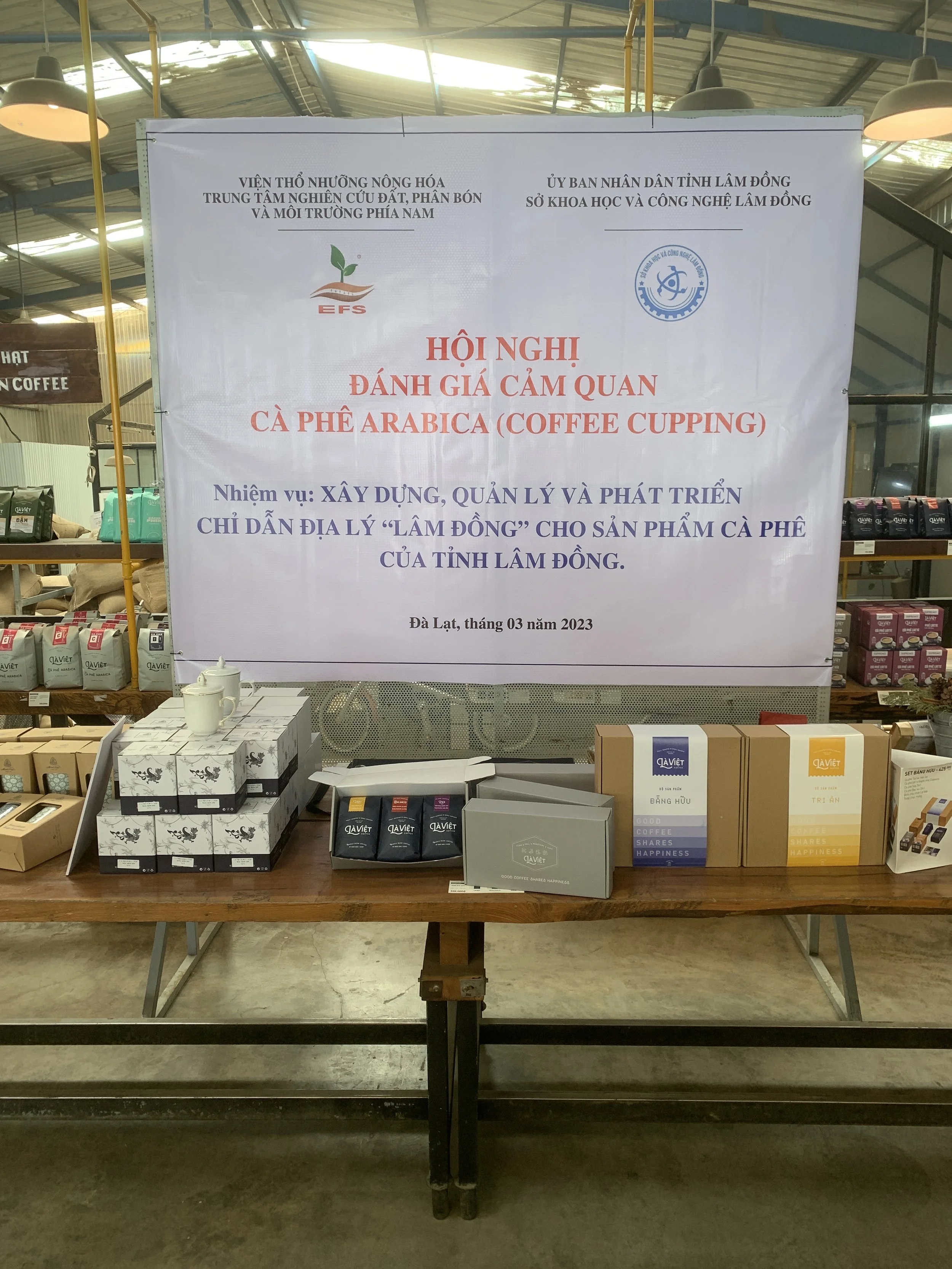Vietnam Regional Profiles Coming into View
There’s a lot of coffee in them hills. We’re only just beginning to understand it.
Last year I was invited to Lam Dong Province to participate in a couple of interesting cuppings that will contribute to a project I’ve long dreamed of for Vietnam—a regional coffee profile map that gives overall geographical and climate information, along with typical flavor profiles for arabicas and robustas from each area.
Years ago, I was gifted a regional profile book of Guatemalan coffees, produced by Anacafe. Acknowledging that individual producers, different cultivars, and varying processing methods will result in different profiles, the book lays out a foundation for what coffee drinkers or buyers can expect from each of these regions. The book was one of the few possessions I arrived with when I moved to Dalat for the first time in 2013, hoping that it could inspire local producers to work collaboratively and take pride in their region’s coffee. I knew that it would be an enormous effort, taking perhaps a decade or two to be completed, not including the time it would take to get other stakeholders involved.
Inspiration for decades.
Ten years later, I am now seeing an effort towards making this a reality, with two government departments leading the charge: The Department of Science and Technology, and The Department of Forestry and Land Management. Last season, the two agencies collected samples from individual coffee farmers in five regions that we evaluated blindly with a group of local coffee industry veterans. The first day, we evaluated 12 arabica samples from five regions, and on the second we evaluated 12 robusta samples from four regions.
The results were pretty close to my expectations, especially for the arabica session, but one robusta surpassed my expectations for both the species and the region. It was quite un-robusta-like, with bright berry acidity, floral and nutty aromas, and a lingering milk chocolate sweet aftertaste - a simple, traditional honey process coffee from Lam Dong (Me Linh). I’ve come to expect generally higher acidity, lower body and bitterness in robustas from Lam Dong, but nothing could prepare me for this coffee. Its explosive aromas and lack of bitterness made me question my ability to discern between robusta and arabica. This isn’t representative of the region, though, as I’d later learn, being such a meticulously handled and processed coffee, but it does show potential for future seasons. I hope that this producer can repeat this fantastic profile again next year.
The best arabica sample was as I expected —from the Lang Biang area of Lam Dong province. It was plummy, with a hint of citrus and apple acidity, slight floral aroma (reminiscent of orange blossom), medium silky body with a nutty-sweet finish. It was a blend consisting mostly of local catimors, with a bit of bourbon, typica, and caturra. With more refining and separation, I’m sure we can pull out some different profiles, but the blend is proving to be quite consistent in its flavor expression year after year. A few lesser-known arabica regions showed some promise as well, but I’ll need to try a few more samples to see if what I experienced was truly representative.
A few takeaways from this experience: 1. There’s growing stakeholder interest in identifying and developing regional coffee profiles, a very exciting development; 2. Although the arabica samples were as I expected, there’s still plenty of room for further drilling into the regions and coffee profiles - verifying for me that the past 10 years’ efforts have been worthwhile; 3. Robusta is still largely unexplored, with immense potential for continued surprises and lots of learning; 4. Now that robustas are starting to get the attention and respect they’ve lacked for too long, viable markets for these coffees need to be identified before encouraging these producers to scale up their efforts. It’s one thing for cupping panels of open-minded industry professionals to affirm their somewhat objective quality, and quite another to identify who the consumer will be. I have a few guesses and thoughts as to who that is, and only time will tell if my hunches are right. I’ll save those hypotheses for another post, and hope that I learn a bit more before I start drafting that one.




